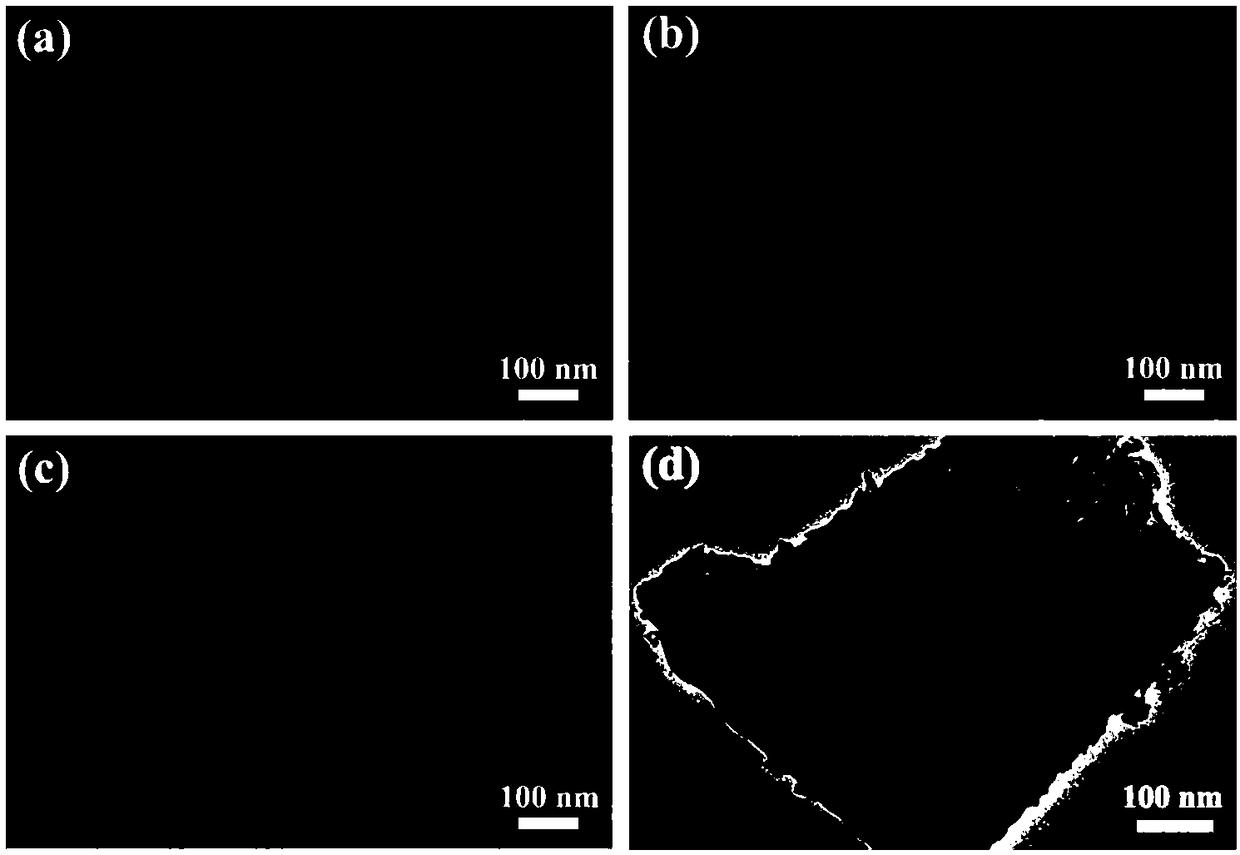Method for preparing antibacterial titanium material having good biocompatibility and containing silver on surface
A biocompatible, surface-containing technology, applied in the field of materials, can solve problems such as cytotoxicity, and achieve the effects of simple operation, strong controllability, and good biocompatibility
- Summary
- Abstract
- Description
- Claims
- Application Information
AI Technical Summary
Problems solved by technology
Method used
Image
Examples
Embodiment 1
[0069] A method for preparing an antibacterial titanium material containing silver on the surface with good biocompatibility, characterized in that it comprises the following steps:
[0070] 1) A titanium dioxide nanotube array (TNT) with a diameter of 70nm was constructed on the surface of the titanium material by anodic oxidation, immersed in a silver nitrate solution, and silver nanoparticles (TNT) were loaded into the titanium dioxide nanotubes by ultraviolet reduction. -Ag).
[0071] 1.1) After drying the cleaned titanium foil (10mm×10mm), the electrochemical corrosion process is carried out;
[0072] The cleaning process is as follows: the titanium foil is sequentially cleaned with ethanol, acetone, ethanol and distilled water for 15 minutes respectively.
[0073] In the drying process: the temperature is 60°C, and the time is 4 hours;
[0074] In the electrochemical corrosion process: the platinum foil is used as the cathode, and the dried titanium foil is used as the...
experiment example 1
[0117] Release of silver ions, evaluation of biocompatibility of materials
[0118] In this experimental example, two different samples, TNT-Ag and LBL, were immersed in phosphorylation buffer (PBS) to study the release of silver ions in the material; and to evaluate the LDH level of osteoblasts on the surface of different materials, the Activity and cell adhesion, specifically including the following steps:
[0119] 1) In order to verify the effect of the multilayer film on the release of silver ions, 5 samples of each group (TNT-Ag and LBL) were soaked in 5mL PBS;
[0120] After incubation (37° C.) for different times (1, 4, 7, 14, 28 days), 5 mL of leachate was taken from each group of samples to detect the release rate of silver ions.
[0121] The release of silver ions in this experiment was measured by ICP-AES;
[0122] from Figure 4 It can be seen that no matter at any time point, the silver ions released by the LBL sample are lower than that of the TNT-Ag sample, s...
experiment example 2
[0134] Bacterial adhesion, antibacterial rate and bacterial activity detection on material surface
[0135] Dilute Staphylococcus aureus and Escherichia coli in 1×10 6 The density of each well was inoculated on the surface of different materials. After culturing at 37°C for 6 hours, the nucleoids were stained with Hochest33258 for 5 minutes. In addition, the antibacterial effect of different material surfaces relative to pure titanium surfaces after 6 hours of culturing was also tested. Rate.
[0136] 1) In this test, in order to prepare the CLSM observation sample, the bacteria were first fixed with 4% paraformaldehyde solution at 4°C for 30 minutes, and then Hochest33258 was used to stain the bacteria at 4°C for 5 minutes. , and then CLSM observes the bacterial adhesion on the surface of different materials;
[0137] 2) In order to test the anti-bacterial adhesion efficiency on the surface of different materials, different titanium materials were taken out, gently rinsed w...
PUM
| Property | Measurement | Unit |
|---|---|---|
| Diameter | aaaaa | aaaaa |
| Volume | aaaaa | aaaaa |
| Concentration | aaaaa | aaaaa |
Abstract
Description
Claims
Application Information
 Login to View More
Login to View More - R&D
- Intellectual Property
- Life Sciences
- Materials
- Tech Scout
- Unparalleled Data Quality
- Higher Quality Content
- 60% Fewer Hallucinations
Browse by: Latest US Patents, China's latest patents, Technical Efficacy Thesaurus, Application Domain, Technology Topic, Popular Technical Reports.
© 2025 PatSnap. All rights reserved.Legal|Privacy policy|Modern Slavery Act Transparency Statement|Sitemap|About US| Contact US: help@patsnap.com



